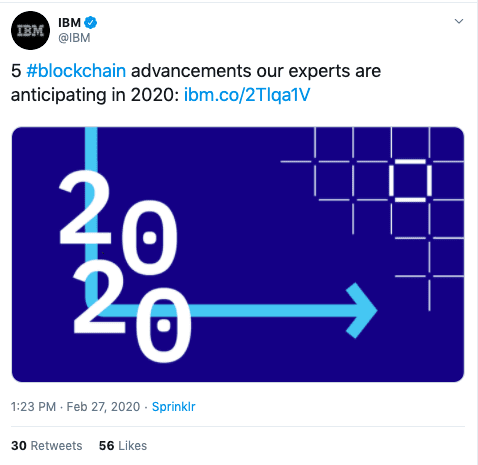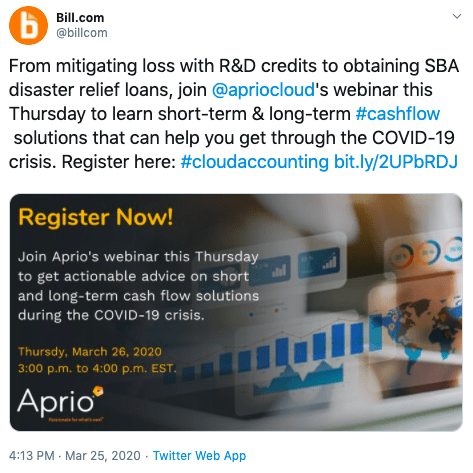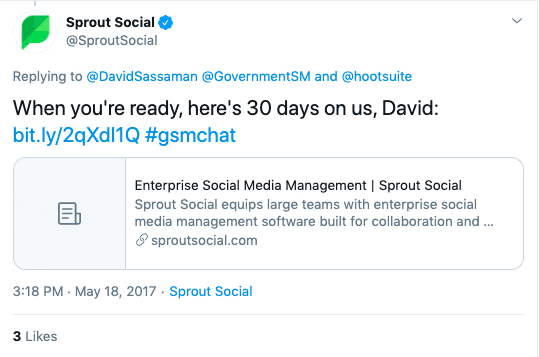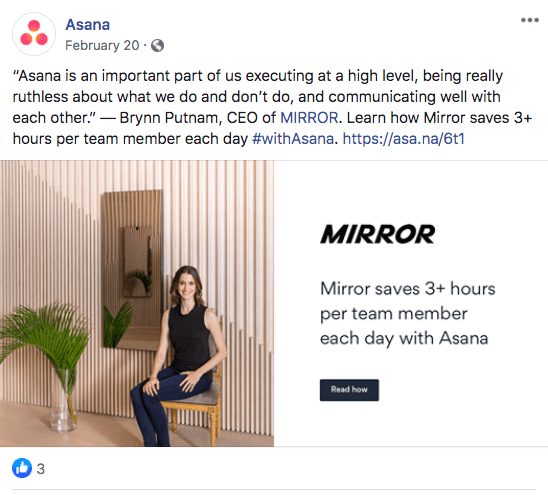Awareness. Consideration. Conversion. The traditional sales funnel dominates most marketing books and introductory courses, but where does social media fit in?
The tactics for achieving social media goals aren’t necessarily the same as the tactics in traditional marketing. We need a new version of the marketing funnel to account for social media. This updated sales funnel includes five stages:
- Awareness: making buyers aware of your product as a solution to a specific pain point or problem
- Consideration: buyers are considering your solution instead of competitors’ solutions
- Conversion: customer makes a final purchase decision
- Engagement: staying top of mind with the customer post-purchase
- Advocacy: customers become authentic brand advocates and recommend you to others
Social media fuels a different customer journey than regular sales, and it doesn’t always follow a strict path. Organic efforts can guide most B2B audiences through these five stages to create awareness and build trust.
Stage 1: Awareness
The journey begins at the top of the funnel. It involves finding potential buyers and making them aware of your brand and offerings. Start by identifying a common pain point for your target audience and then describe how your product offers a solution. This stage is not about pitching your product line — it’s about establishing your brand in the buyer’s mind in a way that improves the odds of recall.
Blog posts, short video tutorials and thought leadership articles are some of the best forms of content to feature at this stage. Social channels can effectively disseminate this content to your audience, but in a digestible, shareable way (e.g., as infographics or GIFs).

This IBM tweet is an excellent example of providing buyers with resources without being overly promotional. As shown above with #blockchain, it’s also important to research popular industry hashtags to ensure you’re tapping into existing online communities. Some important metrics to identify during this stage include reach, impressions and brand lift. If you have the budget, paid advertising is also a consideration because it targets specific audiences, like those who are most likely to make a purchase later.
Stage 2: Consideration
After awareness, buyers transition to the consideration stage. At this point in the journey, buyers are researching your offerings and comparing them to competitors’ offerings. Providing detailed information about your products and features is the focal point of all the content you produce in this stage. Helpful, informative types of content include webinars, white papers, case studies, testimonials and product reviews. Social can drive registrations and downloads by addressing pain points and engaging with your audience directly.

This Bill.com post provides a clear path to solving industry issues with internal educational information. While your posts may link to a landing page with more in-depth information, try to succinctly describe the content asset on social media by addressing the problem and serving up a solution in a strong call to action. Direct contact with customers on social channels is also essential. After all, 67% of customers use social networks to contact a brand, but almost 89% of social media messages to brands go ignored. Don’t lose a potential sales lead due to a lack of communication.
Stage 3: Conversion
The conversion stage is when a buyer initiates and ideally completes a purchase. Promotions, product points of differentiation and retargeting are key at this stage across social channels. While discounts are not consistently employed in most marketing campaigns, slight markdowns or risk-free trial periods offered via social media can boost conversions in a pinch. Use social listening and customer feedback to address common hesitations that may arise during this time. By allowing hesitations to inform social copy, you can give buyers the confidence they need to move forward with the purchase.

Sprout Social encourages buyers who virtually attend product demonstrations and webinars to tweet about their experiences, creating the perfect opportunity for sales follow up. Responding to feedback with a 30-day risk-free trial alleviates any lingering hesitation and moves the buyer closer to completing the purchase.
Stage 4: Engagement
During the engagement stage, you can avoid buyer remorse by making sure the customer feels supported in product implementation. It’s common for brands to forget about buyers during this stage, which damages retention and limits repeat purchases. Consider how you can include the buyer in your online community. A great way to build engagement is through user-generated content (UGC) and a branded hashtag. This reassures buyers about the purchase they just made, while allowing them to share their experience with their peers. For less visual products, community pages on LinkedIn and Twitter chats can create a similar sense of community. Both of these tactics help buyers feel heard and enable them to connect with other purchasers.

Adobe created its #adobe_createjoy hashtag to encourage users to share photos and videos created using their software. This hashtag provides Adobe a wealth of UGC to post and gives buyers the opportunity to have their content showcased to Adobe’s 1 million Instagram followers.
Stage 5: Advocacy
It’s important to take the marketing funnel one step further and consider the advocacy stage. During this stage, your goal is to turn every customer into a lifelong brand advocate. As customers voice their happiness about your brand, they influence their networks to also trust you. Collecting reviews and testimonials is vital at this stage. Fortunately, networks like Facebook can host buyer reviews, and testimonials can be shared in quote cards, short videos and more.

Asana often shares customer testimonials on social using the quote card format. This approach adds credibility, while driving web traffic and ensures the reader can see how they might receive similar benefits. Reward your customers for talking about your brand and giving honest feedback using incentives like referral discounts.
While the use of social media varies at each stage of the social media marketing funnel, investing in every point of the journey ensures your brand reaches buyers in a genuine and meaningful way. From building brand awareness to creating lifelong brand advocates, incorporating social media into your marketing funnel helps your customers feel a deeper connection to your brand.
Social media marketing helps drive business results and Walker Sands is here to help. Contact us for a free B2B social media audit to help enhance your brand’s social presence and build a social media marketing funnel that converts.



